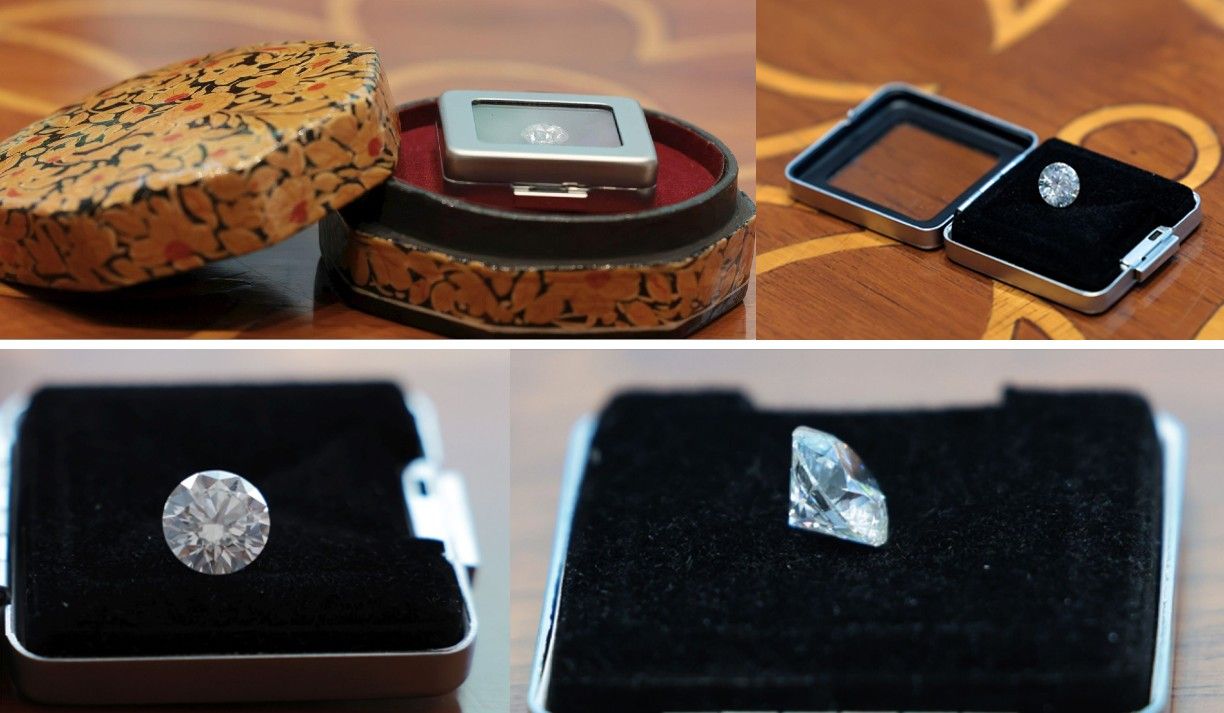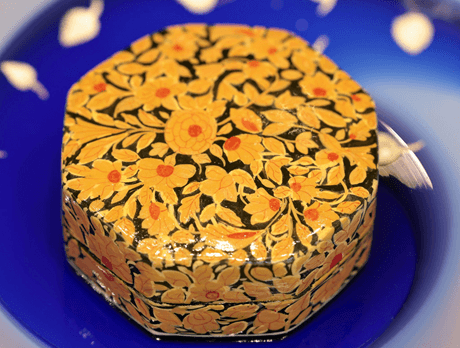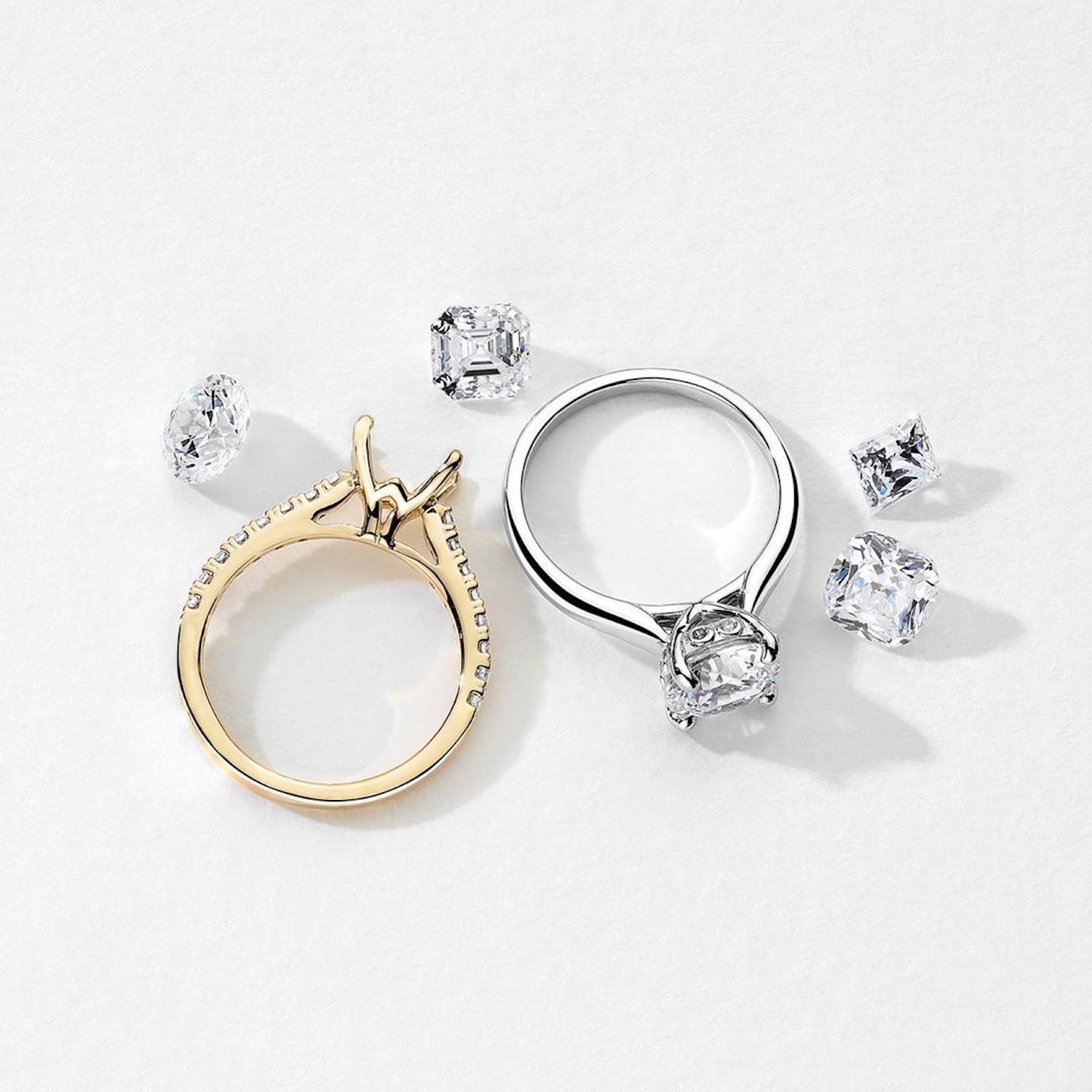June 26, 2023
India’s Prime Minister Gifts First Lady Jill Biden with a Sizable Lab-Grown Diamond

During his recent visit to the United States, Prime Minister Narendra Modi of India presented President Joe Biden and First Lady Jill Biden with multiple gifts. Among these, the highlight was an intriguing paper mâché box holding a 7.5-carat lab-grown diamond!

The remarkable paper mâché box in which the exquisite lab-created diamond was placed is known as kar-e-kalamdani. This intricate creation involves the artistry known as sakthsazi, the meticulous preparation of paper pulp, seamlessly combined with the ultra-detailed painting technique known as naqqashi, creating an impressive paper mâché masterpiece.

The Indian PM's generous gesture is representative of India's endeavors to emerge as a worldwide pioneer in manufacturing environmentally sustainable lab-grown diamonds. Renowned for their significantly reduced carbon footprint compared to mined diamonds, lab-grown diamonds are regarded as an ethical and environmentally friendly jewelry option. India Today reports that the manufacturing process of the 7.5-carat lab diamond presented to the Bidens, created in Surat, India, used a mere 0.028 grams of CO2 emissions per carat in its production. This remarkable figure is over 100,000 times lower than the emissions generated per carat during the production of an average mined diamond. According to India’s Ministry of Information and Broadcasting, the diamond is not only environmentally friendly but also officially deemed "green" due to the utilization of eco-diversified resources such as solar and wind power during its production process.
What Sets Lab Diamonds Apart?
Lab-grown diamonds possess identical chemical properties to their mined counterparts, as both consist of pure carbon crystallized into a consistent structure. While mined diamonds form deep underground, typically 95 to 125 miles beneath the earth's surface, through extensive pressure and heat over more than a billion years, the production of lab-grown diamonds in controlled laboratory environments is significantly accelerated, only taking weeks or months to produce, depending on their carat weight and other variables relating to their color and clarity.
The most remarkable feature of these diamonds is that they eliminate environmental destruction and the unethical and hazardous labor practices associated with diamond extraction operations, as they prevent the need for mining. Moreover, they offer the added benefit of reduced costs due to the lack of expenses associated with mining and long-distance transportation involved with earth-grown diamonds. As a result, customers pay approximately 40–50 percent less than the price of mined diamonds per carat. Interestingly, as technology advances and lab diamonds become more affordable, their cost is expected to decrease even further.
What is India's Motivation Behind the Expansion of its Lab-Grown Diamond Program?
In just three years, from 2018 to 2021, India witnessed a remarkable surge in the dollar value of its exports of polished lab diamonds, skyrocketing from $274 million to an impressive $1.29 billion in sales. Furthermore, in a significant move this year, India's finance minister, Nirmala Sitharaman, declared that the government would extend support to the lab-grown diamond industry by subsidizing research and development expenses. The initiative involves granting funds to one of the Indian Institutes of Technology for five years. In a recent speech, Sitharaman pointed out that the sector of lab-grown diamonds represents a technology and innovation realm with significant employment opportunities. According to India's Ministry of Commerce and Industry, India presently contributes 15% to the global production of lab-grown diamonds. Meanwhile, China holds the dominant position as the leading producer, representing 50% of the global market share. The lab-grown diamond industry, valued at $22.3 billion in 2021, according to Allied Market Research, is projected to more than double in size over the next decade, reaching a staggering $55.6 billion. According to Edahn Golan, a diamond research and data analyst, India has a prominent status as the leading global center for diamond polishing and handling earth-mined and lab-grown diamonds. Approximately 90% of all diamonds worldwide are polished in India, establishing a solid foundation for the country to venture into the lab-grown diamond domain. Golan further emphasized that India's progression into the lab-grown diamond industry was a natural evolution, considering the increasing popularity of these diamonds. In addition, India's existing expertise and infrastructure make it a significant hub for lab-grown diamonds.
Ethical, Environmental, and Affordability Advantages Aside, Why Else Are Lab-Grown Diamonds Important?
Diamonds serve various purposes beyond jewelry, with approximately 80% of the world's diamonds utilized for industrial functions. The exceptional durability of diamonds makes them highly desirable for electronic devices built to endure, like high-end speakers and satellites. Additionally, diamonds play a key role in dentistry tools due to their effectiveness in drilling teeth. Furthermore, diamonds are used extensively in numerous industrial applications that demand exceptional strength.
Looking ahead, lab-grown diamonds are expected to gain an increasing market share, making diamond jewelry more accessible to a wider range of consumers. According to Edahn Golan, with the growing interest in lab-grown diamonds, the industry will likely diverge based on consumer preferences. While some individuals, regarding jewelry, may still favor mined diamonds for their rarity, others will be drawn to lab-grown diamonds as they become more affordable and because of their sustainability and ethical production.
Browse our broad selection of loose lab diamonds and lab diamond jewelry. We realize shopping for diamonds can get a little confusing—that is why our customer concierge team is here to answer all your diamond and diamond jewelry questions. Contact us today!


